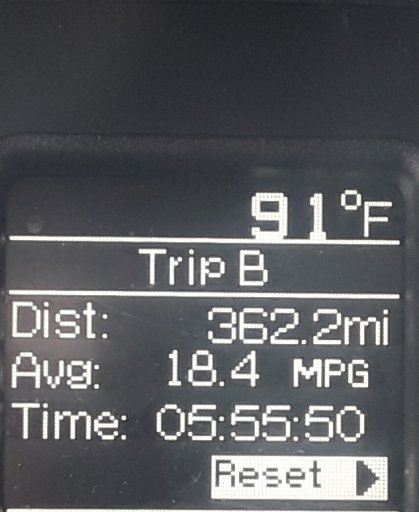
Influencer I
Evening!
So, I've been noticing that there's an awful lot of discussion out there on the "appropriate" MPG for overland vehicles, and how full-size (never mind HD) trucks/SUVs are thus not good categories. Now, I recognize that we're all getting punched in the face/wallet with the current fuel prices, but I'm curious to see just how much savings there ACTUALLY is to be had by sticking with a smaller rig versus a larger one? Especially once it's been modified?
Here's my guess: the cost differential in terms of MPG difference is far, far more narrow between medium- and full-sized rigs versus a HD gas truck once modifications are taken into account.
For example: my Ram 2500 Power Wagon with a 6.4 Hemi got around 16 mpg (hand-calculated, no trip computer) on an 85-mile, TFL Truck-style highway loop. With close-to-35" tires and a front air dam removal, my mileage dropped to roughly 15 mpg (hand-calculated). Over 10,000 miles of ownership, I've averaged just over 13 mpg in total (its my daily driver).
So while you won't ever hear me say that smaller vehicles aren't better MPG-wise than big-boned vehicles, I'd argue that the (modern) big ones are far less influenced by modifications like tires, lifts because they're built to haul a lot of weight.
In sum, I realize that this isn't breaking news, but I thought I'd throw it out there because when I actually talk with my fellow OBers, their real-world differences aren't as stark. Or am I wrong?
So, I've been noticing that there's an awful lot of discussion out there on the "appropriate" MPG for overland vehicles, and how full-size (never mind HD) trucks/SUVs are thus not good categories. Now, I recognize that we're all getting punched in the face/wallet with the current fuel prices, but I'm curious to see just how much savings there ACTUALLY is to be had by sticking with a smaller rig versus a larger one? Especially once it's been modified?
Here's my guess: the cost differential in terms of MPG difference is far, far more narrow between medium- and full-sized rigs versus a HD gas truck once modifications are taken into account.
For example: my Ram 2500 Power Wagon with a 6.4 Hemi got around 16 mpg (hand-calculated, no trip computer) on an 85-mile, TFL Truck-style highway loop. With close-to-35" tires and a front air dam removal, my mileage dropped to roughly 15 mpg (hand-calculated). Over 10,000 miles of ownership, I've averaged just over 13 mpg in total (its my daily driver).
So while you won't ever hear me say that smaller vehicles aren't better MPG-wise than big-boned vehicles, I'd argue that the (modern) big ones are far less influenced by modifications like tires, lifts because they're built to haul a lot of weight.
In sum, I realize that this isn't breaking news, but I thought I'd throw it out there because when I actually talk with my fellow OBers, their real-world differences aren't as stark. Or am I wrong?







